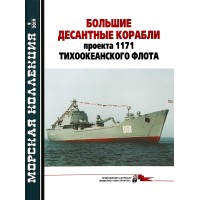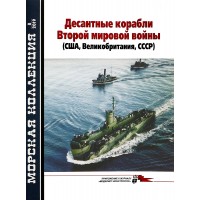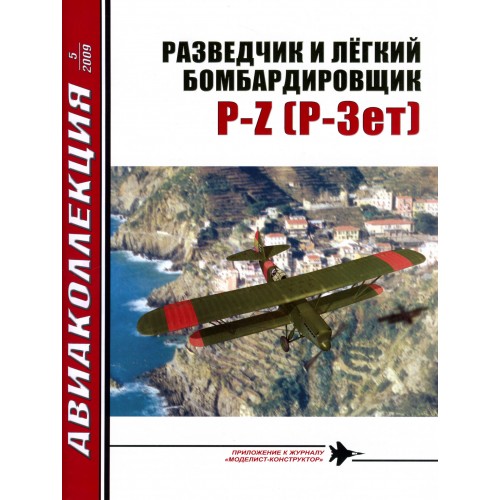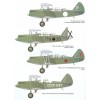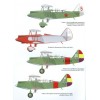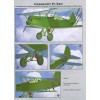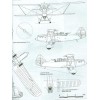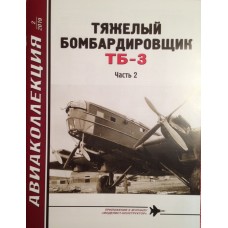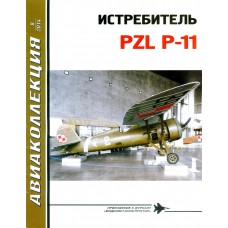AKL-200905 AviaCollection / AviaKollektsia 05/2009: Polikarpov R-Z Light Bomber and Reconnaissance Aircraft . Photos, schemes, colour pictures. 32 pages, soft cover, text in Russian.
CREATING A PLANE
In the spring of 1930, serial production of the new R-5 reconnaissance aircraft and light bomber, a wooden biplane, created under the leadership of N.N. Polikarpov. The aircraft turned out to be successful and soon became the most common aircraft of this purpose in the Red Army Air Force. On its basis, a whole family of specialized options was developed. But at the same time, they did not forget about the modernization of the R-5 itself. The development plan for 1931 included the creation of a reconnaissance aircraft modification for the new M-34 engine (later renamed AM-34).
This engine was designed at TsI-AM under the direction of A.A. Mikulin. It was slightly more powerful than the M-17 engine, originally installed on the R-5, and its design allowed increasing power further. Serial production of the M-34 began in the spring of 1932, although the engine had not yet passed state tests by that time.
The responsibility for the design of the R-5 variant with the M-34 was assigned to plant No. 1 and TsIAM. After several attempts by the leaders of both organizations to "re-pack" the work, a new motor unit for the R-5 was designed in the 5th brigade of TsAGI. The task was not particularly difficult, since according to the assignment issued at one time to Mikulin, it was required to fit into the dimensions of the M-17 and keep the same seats. But the M-34 was somewhat heavier, which shifted the center of the aircraft forward. The first serial motor, No. 2001, was allocated for the R-5.
According to the plan, the aircraft was supposed to take off in October 1932, but in reality this happened earlier - in June. However, the desired improvement in flight data was not obtained during the tests. The documents of the Revolutionary Military Council indicate: "... a complete redesign of the machine is required to reduce the weight of the structure ..."
The experimental design bureau of plant No. 1, headed by D.S. Markov. The main work was carried out by A.A. Skarbov and Alekseev. The new aircraft was first called P5-M34N, and later R-Z (R-Zet). By October 1934, the blueprints for the new version of the motor unit were ready, and the wing and empennage processing was nearing completion. Construction of a full-size model of the aircraft began.
On December 11, a meeting was held with the participation of representatives of the Air Force Research Institute, TsAGI, SUAI and the plant, at which the draft design was considered. Little remained of the R-5 in the proposed aircraft.
The new aircraft was presented as a "high-speed reconnaissance aircraft". It was equipped with an M-34N (supercharged) engine, which sharply raised the altitude characteristics. It developed 750 hp at an altitude of 3500 m, and boosted to 840 hp during takeoff. (the M-17F, which was on the R-5 of the 1934 release, had 500 and 715 hp, respectively). The engine rotated now not a wooden, but a metal screw, the pitch of which on the ground could be changed.
The water radiator, increased in size compared to the R-5, was moved back and enclosed in a fairing, but they retained the possibility of removing it into the fuselage. We reduced the span of the lower wing and the chord of both wings by 200 mm and changed their profile to a faster one. As a result, the total wing area began to be 42.52 m2 versus 50.2 m2 for the R-5. The fuselage was shortened by 800 mm, making an extension that gave it an oval cross-section from below. The tail unit became not wood, but all-metal (duralumin frame, covered with canvas). It took on a completely different form. The steering wheels have lost their horny aerodynamic compensation, but they have acquired flattners. Elevators and rudders were now mounted on ball bearings, rather than on bronze bushings. On the R-5, the angle of the stabilizer could be changed in flight, on the new machine, only on the ground. Fairings appeared between the lower wing and the fuselage. The rubber chassis shock absorbers were replaced with oil-pneumatic ones. On wheels equipped with brakes, drop-shaped fairings were provided. Struggling to keep weight down, many of the details have been eased.
The cockpit was closed with a canopy, which covered the pilot entirely, and the arrow only from the sides. The canopy of the lantern was glazed with triplex, and everything else - with celluloid. At the pilot, the section of the lantern was folded to the side, at the gunner-radio operator it was moved back.
The bomb armament roughly corresponded to that of the R-5 of 1934, but without the bomb racks under the fuselage. The actual bomb load was significantly lower than the originally declared 900 kg: normal - 300 kg, maximum - 500 kg.
PZ small arms consisted of two 7.62 mm machine guns; initially it was assumed that both would be of the ShKAS type. However, later, the PV-1 machine gun was left in front (the same as on the R-5, with an ammunition of 500 rounds), but a ShKAS (1000 rounds) was mounted in the back on the Tur-32 turret (ETur-8), which was one of the first Soviet mechanized turrets. It was based on the Tur-8 mechanism (Venevidova - Gorelova, model 1929), but was not operated manually, but by an electric motor with a power of 600 W. The motor rotated the turret ring, and the gunner moved the machine gun up and down manually.
According to calculations, it was assumed that at an altitude of 4000 m, the maximum speed of R-Zet would be 330 km / h with a completely acceptable landing speed of 93 km / h. In the future, during the modernization of the aircraft, they were going to introduce a more powerful gear motor M-34RFN, a variable pitch propeller and a retractable landing gear.
The conclusion of the meeting participants sounded very favorable to the designers: “The Commission believes that the aircraft, being the design of Plant No. 1, fully corresponds to the technological features of the plant's production and, perhaps, in comparison with another new type, is more quickly mastered in production. The construction of the R-Z aircraft in the proposed form is expedient. "
This decision was a clear victory for industry representatives. The fact is that the Air Force Directorate had its own favorite - the light reconnaissance aircraft PR (TsKB-1). The assignment for its design was issued at the beginning of 1932. The project was carried out by the team of S.A. Kocherigin at the Central Design Bureau (CDB). It was also a classic one and a half glider, but its fuselage was made of metal rather than wood. Its basis was a welded truss made of alloy steel pipes, on which lightweight duralumin frame. In the front part, the cladding was made of duralumin panels, at the back - from canvas. The cockpit was left open, and the gunner's turret was covered by a transparent screen that rotated with it. The wing of the LR was made entirely of wood, the tail unit was made of duralumin, with a linen cover. The chassis, including the crutch, was equipped with oil-pneumatic shock absorbers, there were brakes on the wheels. Small arms - two machine guns: fixed synchronous - under the engine hood and the second - on the turret in the rear cockpit.
The LR aircraft was smaller and lighter than the R-Zet, which, when the same M-34 engine was installed, promised a gain in flight data. This was facilitated by a small bomb load - 200 kg. The aircraft was considered as a high-speed reconnaissance and two-seater fighter.
The first prototype of the LR, built at the plant number 39, went for testing in July 1933 and was equipped with an M-34 engine without a supercharger. The aircraft showed flight data significantly superior to the R-5 and approaching the characteristics of single-seat fighters of that time. The next year, a second copy was built with the M-34N engine. Although the flight weight increased, its data was even higher, with the exception of the flight range, which decreased slightly, despite the increase in fuel reserves. LR has successfully passed state tests, having received a satisfactory mark.
The military insisted on the earliest possible launch of the LR into serial production at plant No. 1 instead of the R-5. But the director of the enterprise, Belenkovich, supported by the leadership of the SUAI, categorically refused this machine, promising his R-Zet instead. You can understand the director: R-Zet, despite all the differences, was technologically very close to the well-mastered R-5. The aircraft was deliberately designed for the capabilities of the enterprise. This made it possible to quickly master mass production without rebuilding production, using part of the old equipment. The adoption of the R-Zet promised cost savings and guaranteed implementation of the plan. The latter was also pleasing to the leadership of the GUAP, which was constantly under pressure from above.
AKL-200905 AviaKollektsia N5 2009: Polikarpov R-Z Light Bomber and Reconnaissance Aircraft magazine
- Brand: AviaCollection / AviaKollektsia
- Product Code: AKL-200905 In Stock
-
$3.90
Available Options
Look at these products too:
AKL-201902 AviaCollection 2019/02 Tupolev TB-3 heavy bomber. Part 2
AKL-201902 AviaCollection 2019/02 Tupolev TB-3 heavy bomber. Part 2..
$3.90




